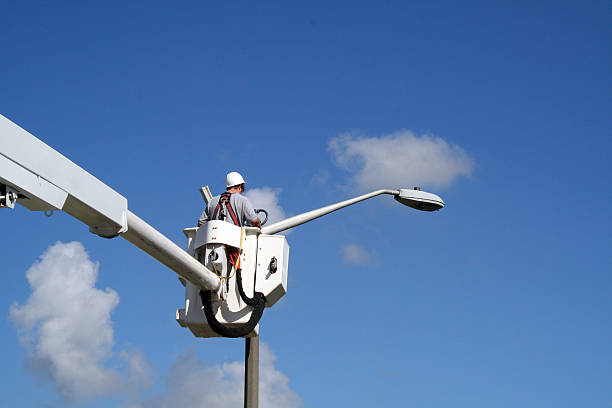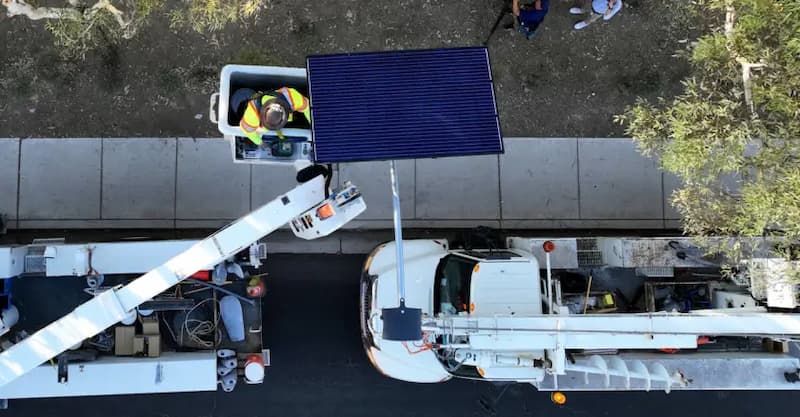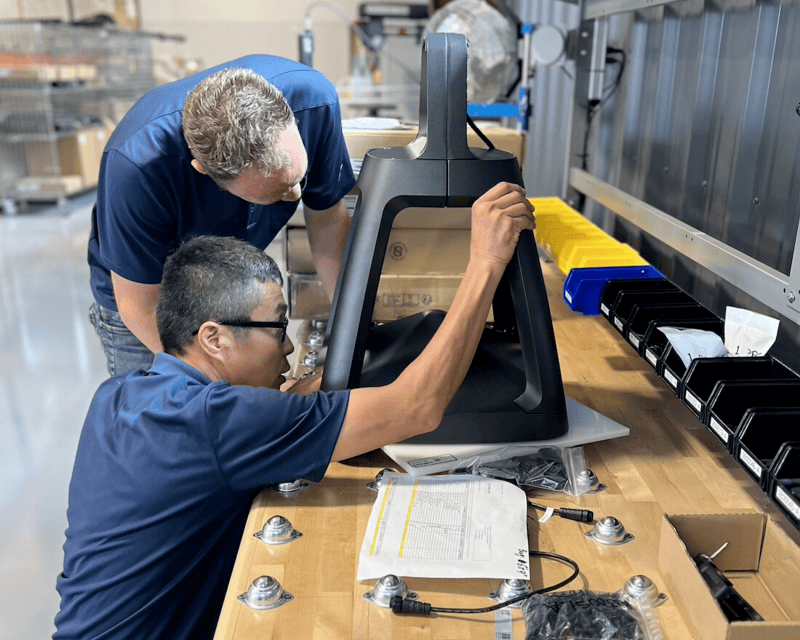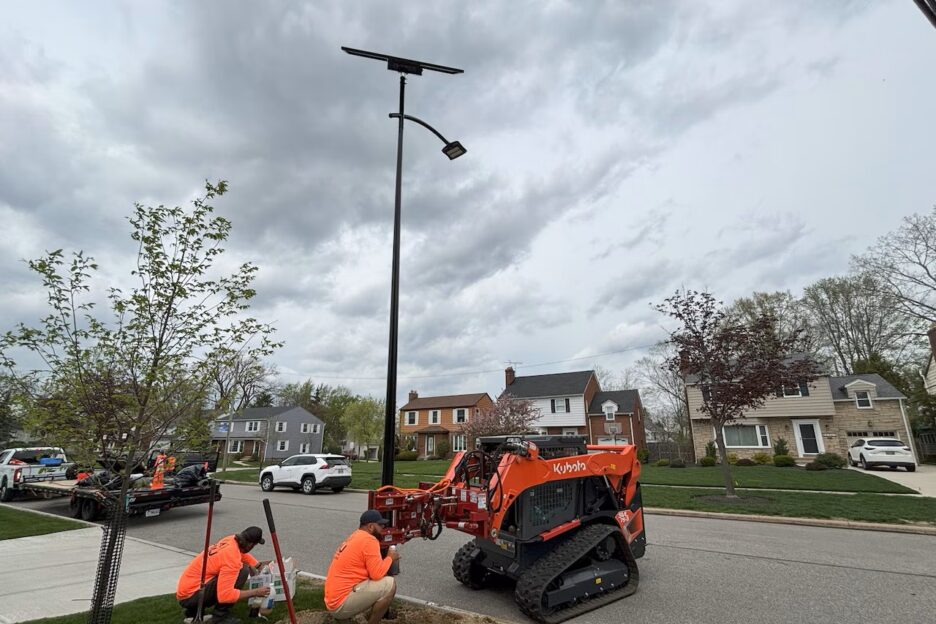Why Streetlight Budgets Keep Blowing Up
On paper, streetlight installation seems straightforward: buy a fixture, plant a pole, and flip the switch. But for cities, developers, and public works teams, the reality is far more complex—and far more expensive.
Traditional grid-tied streetlights carry a host of hidden costs that don’t show up in the initial bid: trenching delays, utility coordination fees, labor overruns, permitting red tape, and ongoing operational risks. These “below-the-surface” expenses are the leading cause of budget overruns and project delays—especially in underserved or aging infrastructure zones.
And while solar lighting still requires installation, it bypasses nearly all of these complications.
This article breaks down the full cost picture of streetlight installation—from what you expect to what most budgets miss—so you can avoid costly surprises, make smarter infrastructure decisions, and deliver safe, resilient lighting with less friction.
💡 Spoiler: Going solar won’t eliminate every cost. But it will eliminate the ones that cause the most delays, overruns, and headaches.
Table of Contents
The Obvious Costs: What You See Upfront
Before You Dig, Here’s What the Budget Sees
Most municipal lighting budgets account for the visible, expected costs—the materials and labor it takes to get a light in the ground and turned on. But even these “obvious” costs come with important variations that influence your total spend.
Labor, Equipment, and Trenching: The Installation Cost Stack
Installing streetlights isn’t just about fixtures and poles. It requires skilled labor, heavy equipment, and—for grid-tied systems—extensive underground trenching that often becomes the most expensive part of the project.
Labor and Crew Costs
- Electricians and public works staff: In the U.S., wages range from $50–$100/hour.
- Installation share: Labor typically makes up 40–50% of grid-tied installation costs.
- Solar advantage: Municipal crews can often install solar lights themselves using existing lift trucks—no electricians or utility coordination required.

Heavy Equipment Rental
- Bucket trucks and aerial lifts: $60–$150/hour, or $1,500–$2,000/day.
- Trenching machinery: Adds more cost, especially with traffic control and safety personnel.
Trenching and Wiring: The Hidden Cost Multiplier
Grid-tied lighting requires trenching to connect fixtures to the electric grid—often the largest installation line item.
- Basic trenching costs (per linear foot):
- Dirt: $5–$12
- Asphalt: $12–$24
- Concrete: $15–$30
- Combo surfaces (urban core): $18–$36+
- Electrical connection: $200–$500 per fixture
- Restoration: Additional fees for backfill, resurfacing, and permitting
What Does That Mean for a Mile of Road?
One mile = 5,280 feet. Assuming 5,000 feet of trenching:
| Surface Type | Low Estimate | High Estimate |
|---|---|---|
| Dirt | $25,000 | $60,000 |
| Asphalt | $60,000 | $120,000 |
| Concrete | $75,000 | $150,000 |
| Combo/Urban Streets | $90,000 | $180,000+ |
Even a short stretch of road can add six figures to the bill before you install a single light.
Why Solar Makes This Vanish
Off-grid solar streetlights avoid trenching entirely. Each unit is self-powered and surface-mounted, with installation taking as little as 45 minutes per pole using existing municipal crews. That’s zero trenching, zero utility hookups, and dramatically lower installation labor.
The Hidden Expenses: Unmasking the Unexpected
What the Line-Item Budget Doesn’t Show
Beyond materials and installation labor, streetlight projects are filled with less-visible costs that can quietly inflate your budget. These “below the surface” expenses include design revisions, permit fees, site challenges, and administrative overhead that are often underestimated — or overlooked entirely.
1. Planning and Design Fees
Even straightforward lighting layouts require professional input. Smaller projects often incur proportionally higher design costs.
- Architectural & engineering fees: Typically 7–15% of the total installed cost (TIC)
- For projects under $500,000, this can climb to 18–27%
- Site analysis & surveys: Topographical, soil, and environmental assessments
- Scope creep and revisions: Design changes and miscommunication can lead to cost overruns of 2–5%
2. Permits and Regulatory Compliance
Every pole, trench, and control box must be permitted — and often, by multiple agencies.
- Building permits: $140–$3,000
- Electrical permits: $40–$500
- Excavation permits: $25–$300
- Right-of-way access: $60–$300+ depending on the zone
- Additional regulatory assessments: Often required for installations near state roads, environmentally sensitive zones, or historical sites
3. Site-Specific Surprises
No two installation sites are alike. Some come with buried challenges that aren’t apparent until crews arrive.
- Unstable soil or buried utilities
- Utility strikes in the U.S. cost an estimated $62 billion annually
- Remote or hard-to-reach locations
- Transporting equipment can add $300–$500 per pole in rural or mountainous terrain
- Urban constraints
- Dense infrastructure may require high-cost surface restoration ($12–$30/ft), night work premiums, or coordination with multiple jurisdictions
4. Project Management and Administrative Overhead
Lighting projects demand oversight from planning through completion — and that comes with cost.
- Project management fees: Typically 6–10% of TIC
- General administration: Legal, audits, internal staff time
- Example: A city managing 10,000 fixtures may spend $160,000+ per year on non-maintenance management
5. Disposal and Demolition
When replacing older systems, cities must budget for removal.
- Dismantling and hauling: $200–$500 per fixture (up to $800 for tall poles)
- Hazardous disposal: $50–$100 per light (especially for HPS with mercury vapor)

The Long-Term View: Ongoing Operational Costs
What Keeps Costing You After the Lights Are On
Once the installation is complete, the financial story of a streetlight project is far from over. For municipalities managing thousands of fixtures, operational costs become a long-term line item — and the differences between grid-tied and solar systems only grow more significant over time.
A. Energy Consumption: The Ongoing Drain
Grid-connected streetlights incur monthly utility charges — charges that compound year after year, and are often tied to rising electricity rates or inaccurate wattage estimations.
- LED vs. HPS Efficiency
- A 250W HPS light uses ~90 kWh/month → ~$10.80/month
- A 100W LED light uses ~36 kWh/month → ~$4.32/month
- Annual energy savings: ~$105 per light by switching to LED
- Cumulative impact: Streetlights can make up up to 40% of a municipality’s total energy bill
- Smart controls add savings: Dimming and motion sensors can reduce energy use by up to 20% beyond LED alone
- Solar solution: $0 utility bill — forever
B. Maintenance and Repairs: Quiet Budget Killers
Ongoing maintenance is often underestimated in budget cycles, especially with older or grid-tied systems.
- Traditional systems (HPS/MH):
- Frequent bulb (2–3 years) and ballast (5–7 years) replacements
- Annual maintenance: $100–$200 per fixture
- LED systems:
- Lifespan of 10–20 years
- Annual maintenance: $20–$50 per fixture
- Solar streetlights (like Fonroche):
- Sealed batteries last 10+ years
- LEDs last 20+ years
- Typical maintenance: ~$50 per year, largely for inspection
C. External Costs: The Risks You Can’t Predict
Municipalities are also vulnerable to unplanned maintenance and damage events — especially in grid-tied systems.
- Theft & vandalism: LA reported $9.9M in FY22–23 just in lighting-related losses
- Copper theft: Underground wiring makes grid-tied systems a common target
- Downtime: Grid outages or failures in centralized control panels can take entire blocks offline — with public safety consequences and added response labor
D. Smart Lighting Operational Overhead
While smart lighting offers improved efficiency, it comes with ongoing technology costs:
- CMS software licenses: ~$140,000/year for 10,000 fixtures
- IoT infrastructure & cloud platforms: Often 15% of infrastructure costs
- Cybersecurity & data management: Rising costs as cities adopt more connected infrastructure
Conclusion: Strategic Planning for Sustainable Illumination
When You Budget Smarter, You Build Smarter
Installing streetlights is never just about bulbs and poles — it’s a complex infrastructure investment with layered costs, regulatory hurdles, and long-term implications. And the biggest mistake cities make isn’t overpaying — it’s underplanning.
The reality:
- Hidden installation expenses can double or triple initial cost estimates
- Trenching alone can add $150,000–$250,000 per mile depending on surface type
- Long-term energy and maintenance costs quietly strain operating budgets
- Technology upgrades, permitting delays, and vandalism risks can throw plans off course
Smart cities plan for the full picture.
By understanding both the visible and invisible costs of lighting projects, municipalities can make informed, strategic decisions — not just to illuminate streets, but to build resilience, reduce liabilities, and future-proof their infrastructure.

Why Solar Belongs in the Budget Conversation
Off-grid solar lighting offers a radically simpler path. With no trenching, no utility coordination, and no recurring energy costs, solar dramatically reduces the budget burden — both at install and for years to come.
Fonroche Lighting America delivers complete, self-contained solar streetlight systems engineered for reliability, longevity, and minimal maintenance. Cities gain control over installation timelines, eliminate third-party dependencies, and avoid the most common causes of cost overruns.
Ready to Cut Streetlight Installation Costs — For Good?
Explore Fonroche’s solar-powered street and roadway lighting systems.
We’ll help you take the guesswork — and the hidden costs — out of infrastructure planning.

